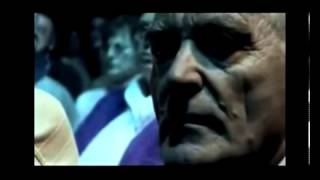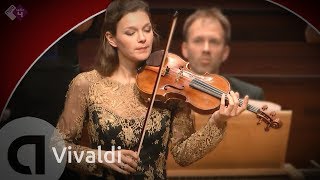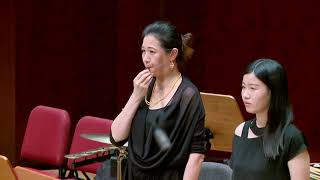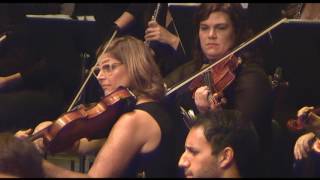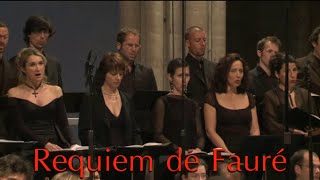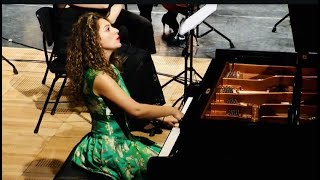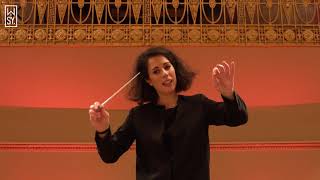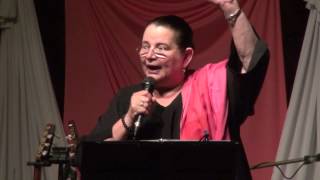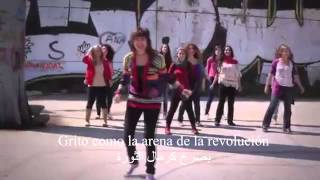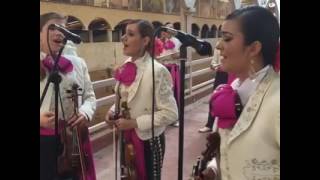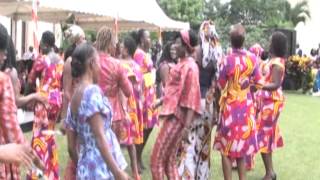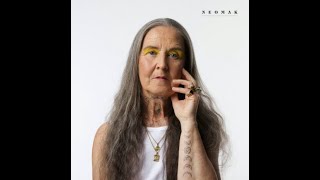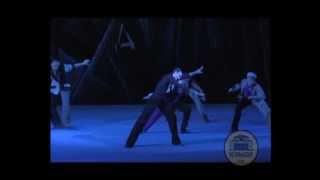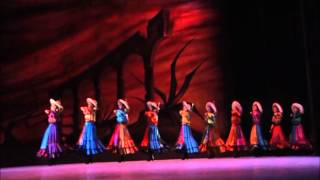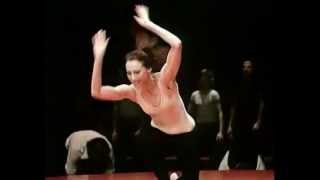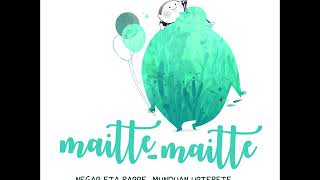March 3 Fascist massacre in Vitoria/Gasteiz
March 4 Vivaldi is born
March 7 Ravel is born March 8 International Women's Day
Recommended music videos for initiation to classical music
Lluis Llach (1948) is a Catalan singer-songwriter who, along with other colleagues, was a promoter of the Nova cançó catalana and the author of various protest songs during the Franco era. In 1969 he gave a solo recital at the Palau de la Música, demonstrating his popularity among people of all ages. In 1973 he performed at the Olympia in Paris to great acclaim from the public and critics; during this period he also performed in Switzerland, Germany and Mexico . In 1976, after Franco 's death, he gave three recitals at the Palau des Sports in Montjuïc. In 1979 he was the first non-operatic singer to perform at the Liceu in Barcelona and in 1985 he filled the Camp Nou with more than 100,000 spectators. In 2007 he decided to end his career with a concert in Verges (Girona).
Bells of Death . On March 3, 1976, at 5:10 p.m., the National Police evicted the Church of San Francisco de Asís in Vitoria-Gazteiz , where 4,000 striking workers were meeting. To do so, they used tear gas, rubber bullets and live ammunition, killing five people and wounding more than 150 others. In the protests that followed the massacre, the repression of the protests ended the lives of two more people. Despite the 48 years that have passed, the events have still not been tried or investigated. In memory of this massacre, Lluis Llach composed the song that we offer today, performed by himself.
Antonio Vivaldi (1678-1741) was an Italian priest, violinist and composer known as the Red Priest (“il prete rosso”). He was born in Venice and as a child he learned to play the violin with his father. At the age of 15 he entered the seminary and once ordained a priest, he could barely attend to his religious obligations due to his health problems; so he was appointed violin teacher in an orphanage where he gave theoretical and instrumental classes. At the age of 40 he was appointed Chapel Master in Mantua where he wrote his famous Four Seasons , his best-known work. Throughout his life he composed almost 800 works, of which half were concertos, 40 operas, 60 religious works and numerous sonatas.
The Four Seasons is a set of four concertos, one for each season, for solo violin and string orchestra; each concerto is divided into three movements (I Rapido, II Lento, III Rapido); it is Vivaldi 's most appreciated work and one of the most popular in the history of music . At the time, with the publication of the work he accompanied an explanatory brochure in which he described in detail the development and meaning of the music, in the manner of what centuries later would be called Programmatic or descriptive music .
Spring : I (0´04´´) ALLEGRO .-. II (3´31´´) LONG .-. III (6´02´´) ALLEGRO .-. Summer : I (10´22´´) ALLEGRO NON MOLTO) .-. II (15'41'') ADAGIO.-. III (17'54'') PRESTO .-. Autumn : I (21´01´´) ALLEGRO .-. II (26´10´´) ADAGIO MOLTO .-. III (28´41´´) ALLEGRO .-. Winter : I (32´05´´) ALLEGRO NON MOLTO .-. II (35´21´´) LONG .-. III (37´00´´) ALLEGRO. Today it is offered to us by the Dutch violinist Janine Jansen (1978) accompanied by the Amsterdam Sinfonietta.
Shin'ya Takahashi (b. 1962, Shinja, Japan) is a Japanese composer, who earned his bachelor's and master's degrees in composition from Kunitachi College of Music . His March Beyond the Horizon was selected as a test piece for the 1999 All-Japan Band Competition , and another work, Jalan-jalan, Vision of Isle of the Gods , in the style of gamelan (traditional Indonesian music), was selected as a test piece for the 2005 Bavarian State Wind Band Festival . His compositional style employs a variety of Asian ethnic influences such as Japanese culture ( Sharaku ), the traditional Southeast Asian gamelan genre ( Jalan-jalan ), or Korean folk songs ( Song of the Straits ). He also writes for a variety of ability levels (Gold Rush!, Sunday Market, and Weather Report). His march Wind for Winds has the relaxed air that allows his work to be presented to many ensembles.
Keiko Kobayashi is a Japanese conductor born in Tokyo ; she graduated from Yamanashi University , majoring in education (music). She then completed a diploma in conducting at Senzoku Gakuen College of Music and took the Conducting Seminar at Rohm Music Foundation in 2003. She has conducted many professional orchestras and wind ensembles, including the Schloss Hallwyl Opera in Switzerland , the Sri Lanka Symphony Orchestra and the Tokyo Kosei Wind Orchestra , among others; she also performs as an active pianist/accompanist and frequently conducts musicals at the New National Theatre in Tokyo . She was assistant conductor of the Tokyo Kosei Wind Orchestra from 2004 to 2006; in 2007 she won first prize in the international conducting masterclass at the Mid Europe International Wind Music Festival; she released a DVD and another CD with the Tokyo Kosei Wind Orchestra . She took a major role in founding the Colombo Wind Orchestra , the first wind band in Sri Lanka , and has been performing with them since 2012. Apart from performing with them, she is invited as a judge to the Asia Symphonic Wind Band Competition and the Japan Wind Band Competition. ( Excerpted from WEBLIFE article )
Jure Robežnik (23 August 1933 – 7 October 2022) was a Slovenian pianist and composer who focused mainly on jazz and popular music . Despite not having formal musical education, he was the author of more than one hundred and fifty pieces of music.
Neža Torkar (1990) is a Slovenian accordionist who studied music and accordion in Slovenia and Germany , and has given numerous concerts throughout Europe as a soloist and as a member of chamber groups. She has won important European awards as an accordion soloist.
She is accompanied today by the Slovenian five-woman vocal group Gallina ensemble.
Recommended classical music videos
Fanny Mendelssohn (Berlin 1805-1847) was an early Romantic composer and pianist. Her compositions include a piano trio, a piano quartet, an orchestral overture, four cantatas, over 125 piano pieces and over 250 lieder, most of which were published posthumously. Although she was praised for her piano playing prowess, she rarely gave public concerts. Fanny grew up in Berlin where, together with her younger brother Felix Mendelssohn , she received a thorough musical education from teachers such as Ludwig Berger and Carl Friedrich Zelter . Due to the social status of women at the time, several of her works were published under her brother's name in his opus collections 8 and 9.
Overture in C major . Composed by Fanny around 1830, to be performed (like much of her music) at the weekly concerts at the family home in Berlin . The score had been gathering dust in the Mendelssohn Archive in that city, apparently since the composer's death (if not longer), until Judith Rosen , a board member of the San Francisco Women's Philharmonic , negotiated its publication. Reconstructed from a disorganized and much-revised score written by the composer herself, we offer it today in the version of the Taiwanese conductor Mei-Ann Chen (1973) and current principal conductor of the Chicago Sinfonietta (notes extracted from Don Anderson's article © 2019 for Arkansas Symphony Orchestra )
Gabriel Fauré (1845-1924) was a French composer, teacher, organist and pianist, widely regarded as one of the foremost French composers of his generation; his musical style influenced many 20th-century composers. His best-known works include the Pavane , the Requiem , the Nocturnes for piano, and the songs Après un rêve and Clair de lune . His mentors included Camille Saint-Saëns , who became his lifelong friend. When he achieved success, he held the important positions of organist at the Madeleine church and director of the Paris Conservatoire . His legacy has been described as bridging the gap between late Romanticism and the Modernism of the second quarter of the 20th century .
Requiem . In the Roman liturgy, the Requiem (from Latin requiem, 'rest'), also called the Requiem Mass (in Latin, missa pro defunctis or missa defunctorum), is the Mass for the dead; that is, a prayer for the souls of the deceased, carried out just before the burial or in the ceremonies of remembrance or commemoration (in our case, in memory of the victims of Gasteiz ). This service is also usually observed by other Christian churches, such as the Anglican Church and the Orthodox Church . Its name comes from the first words of the introit: "Requiem æternam dona eis, Domine, et lux perpetua luceat eis" ('Grant them eternal rest, Lord, and may perpetual light shine upon them'). By extension, requiem is also the name given to more than one hundred musical compositions used mainly to enhance these liturgical services, as well as concert pieces.
Gabriel Fauré's Requiem in D minor, Op. 48 , is one of the most popular Requiem Masses . It was written between 1886 and 1888, and first performed at the Madeleine Church in Paris in early 1888 at funeral Masses, and then as a concerto in May of that year. Considered one of the most beautiful Requiem Masses , it is usually performed by choir and orchestra. The piece is in seven parts and the text is in Latin: I (0´23´´) INTROIT ET KYRIE .-. II (7´18´´) OFFERTOIRE .-. III (15´05´´) SANCTUS .-. IV (18´38´´) PIE JESU .-. V (22´26´´) AGNUS DEI ET LUX AETERNA .-. VI (28´33´´) LIBERA ME .-. VII (33´16´´) IN PARADISUM. Notably innovative, when writing it, Fauré adjusted the traditional liturgical order by omitting the sequence " Dies irae " and adding the responsory " In Paradisum ", taken from the Office of the Dead ; thus, the apocalyptic horror of the wrath of God disappears, and instead there is a serene and definitive comfortable vision of Heaven.
Today we offer it in a performance by soprano Karina Gauvin , baritone David Bizic , the Accentus Choir and the Ensemble Orchestral de Paris, all of them conducted by the distinguished French maestro Laurence Equilbey .
Emilie Luise Friederika Mayer (1812–1883) was a German composer and sculptor of the Romantic period. Although she began her composition studies relatively late in life, she was a prolific composer and widely regarded throughout Europe during her lifetime, composing at least eight major symphonies, fifteen concert overtures and a large body of chamber music. On 28 August 1840 her life took a shocking turn when her father shot himself, ending his life on the 26th anniversary of the death of Emilie Mayer 's mother. Author Marie Silling wrote of the event: "Her father's death caused her first great and profound grief; in order to numb this pain she buried herself in work."
The Concerto is a musical form written for one or more solo instruments accompanied by an instrumental ensemble. It was Vivaldi who established the fundamental bases of its structure with three movements ( I fast-II slow-III fast ) and presented as a dialogue between the soloists and the instrumental ensemble. From classicism onwards (1750-1810), especially from the bases created by CPE Bach , the first movement is built following the patterns of the sonata form (exposition, development and reexposition) , while the second and third movements adopt free and punctual forms. Frequently (not always), at the end of the first and/or third movements, the soloists have a cadenza without orchestral accompaniment with which to show off their virtuosity.
Today we present the Piano Concerto in B flat major written by Emilie Mayer and performed by Heghine Rapyan on the piano accompanied by the female orchestra FSOA (Female Symphonic Orchestra Austria) conducted by the founding maestro and current conductor Silvia Spinnato . The concerto is divided into three movements: I (0´00´´) ALLEGRO .-. II (13´54´´) UN POCO ADAGIO.-. III (21´44´´) ALLEGRO.
Maurice Ravel (1875-1937), born in Ziburu/Ciboure (Basque Country in France), inherited his father, an engineer of Swiss origin, his meticulousness in work, and his mother, born in Mendata (Bizkaia), his passion for music with the folk songs with which he adorned his childhood. A few months after his birth, the family moved to Paris , where at the age of six he began his piano studies. At the age of 14 he entered the Paris Conservatoire where he had the opportunity to study with Gabriel Fauré . In 1901 he premiered his Jeux d´eau , a piano work with which he began to make his way in the musical circles of Paris where there was discussion about the influence of Ravel on Debussy and vice versa. In 1921 he settled in a mansion near Paris until his death, where eminent musicians and intellectuals met.
Ma mère, l'oye (My Mother, the Goose) is a musical work by Maurice Ravel composed for piano four hands; he originally wrote it as a piano duet for children, after having dedicated an earlier work, Sonatine , to his parents. It was transcribed for solo piano by Ravel 's friend Jacques Charlot in the same year it was published (1910). Both piano versions bear the subtitle Cinq pièces enfantines (Five Children's Pieces). In 1911 Ravel orchestrated the work; later that year he enlarged it into a ballet, separating the initial five pieces with four new interludes and adding two movements at the beginning, Prèlude and Danse du rouet et scène . The ballet premiered on 29 January 1912 at the Théâtre des Arts in Paris , and reads as follows:
Structure of the work . (0´09´´) PRÉLUDE (Prelude).-. II (3´13´´) DANSE DU ROUET ET SCÈNE (Scene and Dance of the spinning wheel).-. III (6´32´´) PAVANE DE LA BELLE AU BOIS DORMANT (Sleeping Beauty Pavane).-. IV (8´05´´) INTERLUDE (Interlude).-. V (8´46´´) LES ENTRETIENS DE LA BELLE ET DE LA BÊTE (Talks of Beauty and the Beast).-. VI (13'04'') INTERLUDE (Interlude) .-. VII (13´49´´) PETIT POUCET (Little Thumbelina) .-. VIII (16´50´´) INTERLUDE (Interlude) .-. IX (18´01´´) LAIDERONNETTE, IMPÉRATRICE DES PAGODES (Laideronnette, Empress of the Pagodas) .-. X (21´48´´) INTERLUDE (Interlude) .-. XI (23:03´´) LE JARDIN FÉERIQUE (The Fairy Garden). Today it is offered to us by the Vienna Symphony under the baton of the young and brilliant maestro Marie Jacquot .
Recommended music videos for all tastes
International Women's Day (previously known as International Working Women's Day ) commemorates on March 8 every year the struggle of women for their participation in society and their full development as people, on an equal footing with men. The numeronym " 8-M " is also used to refer to this commemoration in reference to the day and month in which it is commemorated.
Recommended peculiar videos
The Golden Age, Op. 22, is a ballet in three acts and six scenes by Dmitri Shostakovich to a libretto by Alexander Ivanovsky and choreography by Vasili Vainonen (act 1), Leonid Jacobson (act 2) and V. Chesnakov (act 3). The ballet is a satirical take on political and cultural change in 1920s Europe featuring a Soviet football team in a Western city, where they come into contact with many politically incorrect, antagonistic characters such as the Diva, the Fascist , the Agent Provocateur , the Negro and others. Victims of police harassment, the team are unjustly imprisoned and are released from prison when the local workers overthrow their capitalist masters. Shostakovich himself was a great supporter of football and is said to have coined the expression "Football is the ballet of the masses".
Juana Gallo . Her real name was Ángela Ramos Aguilar . Juana Gallo was nicknamed since she was a child: Juana , because it was a very common name, and Gallo because of how braggart she was. She was respectful towards religion and its priests while hanging out with the leaders of the Revolution. On the other hand, Adelas or Adelitas were the women who were part of the revolutionary cliques, whether as armed elements, cooks or nurses.
The video we are presenting today is a tribute to all those revolutionary women by the Ballet Amalia Hernández or Ballet Folklórico de México founded in 1952 by the dancer and choreographer Amalia Hernández ; a ballet that has been a reference point for traditional Mexican music and dance for all these years. Its performances take place throughout the country, and it has also travelled to more than 60 countries.
Jesús Guridi (1886-1961) was born in Vitoria-Gazteiz into a musical family. After his family moved to Madrid , Guridi enrolled at the Conservatory ; however, his parents' finances were not good, so they moved to Bilbao , where, thanks to his patron, the Count of Zubiría , he was able to move to Paris and enroll at the Schola Cantorum to study piano, organ, counterpoint and composition. After completing his studies, he went to Belgium , Cologne and Munich to further his studies. Back in Bilbao , at the age of 21, he took charge as director of the Bilbao Choral Society , a job that he combined with that of organist at the Basilica (now Cathedral) of Santiago . In 1939 he returned to Madrid as director of the Conservatory , where he would die at the age of 75.
Amaya is an opera in three acts and an epilogue with music by Jesús Guridi and libretto by José María Arroita Jáuregui (translated into Basque by José Arrue ), based on the novel Amaya or the Basques in the 8th Century , by Francisco Navarro Villoslada . It premiered on 22 May 1920 at the Albia Coliseum in Bilbao .
Today we present the Ezpata Dantza (Sword Dance) from this opera, which is written in a mix of 6/8 and 3/4 time and is one of the rhythms that, along with the Zortziko (5/8), have been considered the most characteristic of Basque music. (Extracted from the Auñamendi Encyclopedia).
The Bolero (French: Le Boléro) is a musical work created by Maurice Ravel in 1928 and premiered at the Opéra Garnier in Paris on 22 November of that year. The immediate success and rapid universal diffusion of Le Boléro , dedicated to the dancer Ida Rubinstein , made it not only one of the most famous works of the composer, but also one of the exponents of 20th century music . An orchestral movement inspired by a Spanish dance, it is characterized by an invariable rhythm and tempo, with an obsessive melody - an ostinato - in C major , repeated over and over again without any modification except for the orchestral effects, in a crescendo that, in extremis, ends with a modulation to E major and a thunderous coda. Although Ravel said that he considered the work to be a simple study in orchestration, the Boléro hides a great originality, and in its concert version it has become one of the most performed musical works in the world, to the point that until 1993 it remained in first place in the world ranking of copyright of the Société des auteurs, compositeurs et éditeurs de musique (SACEM).
Today we offer it in a performance by Maya Plisetskaya (1925-2015), “prima ballerina assoluta” of the Bolshoi Theatre , accompanied by Le Ballet du XX e siècle
Recommended music videos for children
Various Wikipedia articles have been used to write these texts.
The texts of Videomusicalis are written in Basque, Spanish and English.





